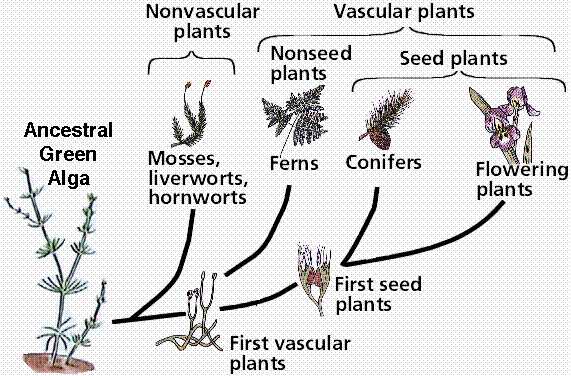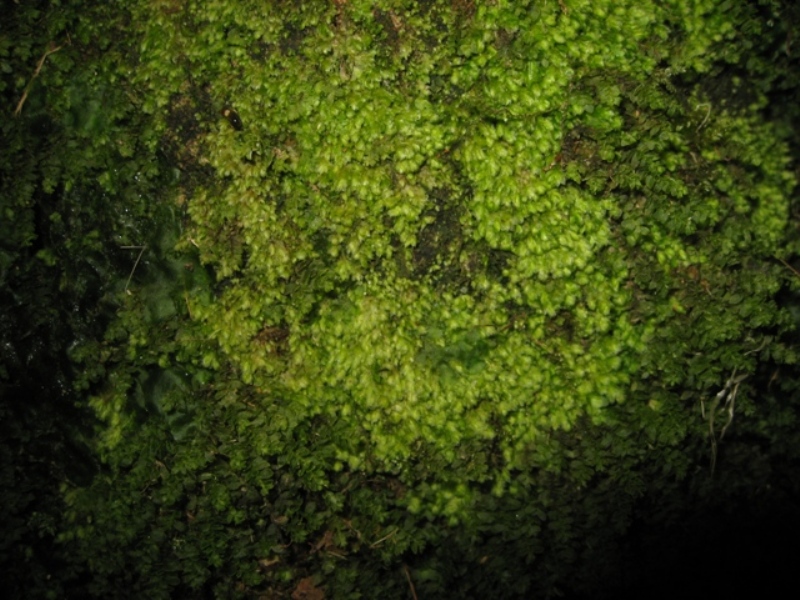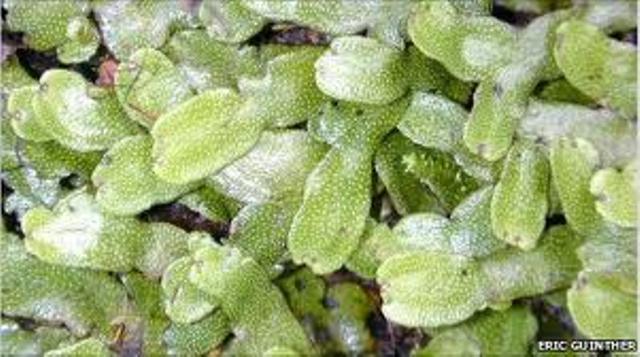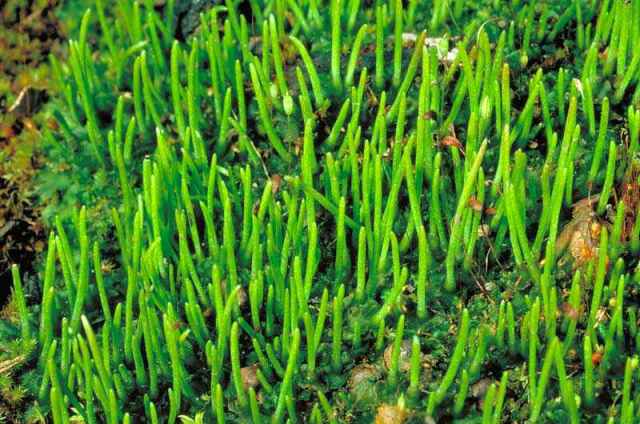


There are about 24,700 species of bryophytes—mosses, liverworts, and hornworts—that are simply but highly adapted to a diversity of terrestrial environments (even deserts!). Scientists now agree that bryophytes consist of three quite distinct phyla of relatively unspecialized plants. Their gametophytes are photosynthetic. Sporophytes are attached to the gametophytes and depend on them nutritionally to varying degrees. Bryophytes, like ferns and certain other vascular plants, require water (for example, rainwater) to reproduce sexually. It is not surprising that they are especially common in moist places, both in the tropics and temperate regions. Most bryophytes are small; few exceed 7 centimeters in height. The gametophytes are more conspicuous than the sporophytes. Some of the sporophytes are completely enclosed within gametophyte tissue; others are not and usually turn brownish or straw-colored at maturity.

The gametophytes of mosses typically consist of small leaflike structures (not true leaves which contain vascular tissue) arranged spirally or alternately around a stemlike axis (figure 37.4); the axis is anchored to its substrate by means of rhizoids. Each rhizoid consists of several cells that absorb water, but nothing like the volume of water absorbed by a vascular plant root. Moss “leaves” have little in common with true leaves, except for the superficial appearance of the green, flattened blade and slightly thickened midrib that runs lengthwise down the middle. They are only one cell thick (except at the midrib), lack vascular strands and stomata, and all the cells are haploid. Water may rise up a strand of specialized cells in the center of a moss gametophyte axis, but most water used by the plant travels up the outside of the plant. Some mosses also have specialized food-conducting cells surrounding those that conduct water.

The old English word wyrt means “plant” or “herb.” Some common liverworts have flattened gametophytes with lobes resembling those of liver—hence the combination “liverwort.” Although the lobed liverworts are the best-known representatives of this phylum, they constitute only about 20% of the species (figure 37.6). The other 80% are leafy and superficially resemble mosses. Gametophytes are prostrate instead of erect, and the rhizoids are onecelled. Some liverworts have air chambers containing upright, branching rows of photosynthetic cells, each chamber having a pore at the top to facilitate gas exchange. Unlike stomata, the pores are fixed open and cannot close. Sexual reproduction in liverworts is similar to that in mosses. Lobed liverworts may form gametangia in umbrella- like structures. Asexual reproduction occurs when lens-shaped pieces of tissue that are released from the gametophyte grow to form new gametophytes.

The origin of hornworts are a puzzle. They are most likely among the earliest land plants, yet the earliest hornwort fossil spores date from the Cretaceous period, 65 to 145 million years ago, when angiosperms were emerging. The small hornwort sporophytes resemble tiny green broom handles rising from filmy gametophytes usually less than 2 centimeters in diameter (figure 37.7). The sporophyte base is embedded in gametophyte tissue, from which it derives some of its nutrition. However, the sporophyte has stomata, is photosynthetic, and provides much of the energy needed for growth and reproduction. Hornwort cells usually have a single chloroplast.